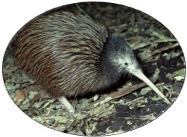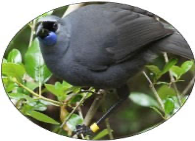Is the Mt Messenger Bypass needed?
Yes. The current road – our only main highway connecting Taranaki to the north - is hazardous, and a new route is urgently needed.
Is this the best deal for Ngāti Tama?
Yes, and other local Iwi agree the Agreements proposed are outstandingly good for our Ngāti Tama. We’ve been in negotiation with NZTA since 2016.
What local opportunities will the Project provide?
The project will create work, training and business opportunities. This includes a range of construction-related roles and work in areas such as pest management and planting. Site support could provide business opportunities in areas including accommodation, catering, security and transportation.
Isn’t the new road going to destroy Papatūānuku?
Papatūānuku and her children are currently under attack by pests, wild animals and farmstock. This has been happening over many decades. Claims that the environment is pristine are being made by people who don’t fully understand the damage already done by pests and how this will get worse if nothing is done.



What will happen to the native trees and species if we don’t accept the NZTA offer?
Short answer – there will be greater destruction of our native species and of Papatūānuku!
The forest will continue to be degraded. Some of our forest giants, especially northern rata and totara, will continue to die because of canopy damage by possums and browsing of seedlings by goats, pigs and cattle. Without regular pest control it is possible that northern rata will disappear completely from our forests in just a few decades. Kiwi and long-tailed bats are likely to disappear from the unmanaged areas over the next few decades.
Won’t the project harm our rivers and streams?
While the water quality in the upper reaches of the Mangapepeke Stream and Mimi River is good compared to other streams elsewhere in the North Island, it is not pristine. The diversity and quantity of fish and other aquatic life could be better, because neither stream has enough protective forest canopy to keep the waters cool (which native fish species require) and to provide food for the stream inhabitants.

During and after the bypass construction, a variety of controls and other measures will be used to ensure the water quality is maintained to a high level. This means the quality of the stream habitat is improved considerably.
This waterway that flows into the Mangapepeke stream will benefit from the project. Removing cattle, goats and feral pigs will allow native trees to regenerate and replace the damaged grass. Planting of more native trees will also help.
How is the road designed?
The design of the road is sensitive to the terrain, including Mt Messenger and Parininihi, and does not disturb the culturally and ecologically significant Waipingao wetland. It keeps low in the landscape by aligning with the Mimi and Mangapepeke valleys as much as possible.
Treading lightly on the land has guided the design. This includes minimising the impact on the natural environment and protecting wildlife during and after construction. The new route layout avoids as many old and ecologically important trees as possible so that only 16 significant trees will have to be removed. These will be provided to Ngāti Tama.
We have an opportunity to incorporate our stories into the road’s design. Ngāti Tama’s traditional role as northern ‘gatekeepers’ of the wider Taranaki region will be acknowledged by three pou depicting the defence line that reflects the historical ‘Te Wero’ (challenge) when entering Taranaki from the north. The tunnel’s northern entrance features ‘Te Kauae o Ngāti Tama’ – the jaws of Ngāti Tama.